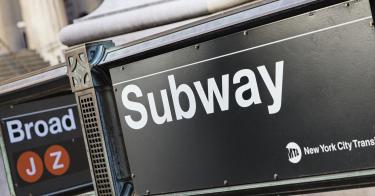Things are expensive in New York City. In many neighborhoods, even a modest apartment may rent for several thousand dollars per month. The price of food, gas, and many other staples are also well above the national average.
Yet even hardened New Yorkers suffered sticker shock when the Metropolitan Transit Agency announced it will cost $5.5 billion to build elevators for just 70 train stations, or roughly $81 million apiece. These lifts are not gold-plated or furnished with Italian leather interiors. They’re just elevators, and folks who will never ride them are expected to help with the bill.
Comparable major cities around the world manage to spend considerably less on such projects. London and Paris budget around $22 million for each of their new transit elevators. Berlin builds them for under $10 million per station, which is a fraction of what New York plans to shell out.
Such reckless, irresponsible spending has become par for the course in New York City. Several subway construction projects in recent years have had costs swell to billions of dollars per mile, and the agency is planning more of them.
MTA’s fiscal mismanagement has multiple causes. Its multi-jurisdictional governing structure makes decision-making harder and public accountability next to impossible. Environmental and community project reviews can drag on for years. The cost of unionized construction labor, which includes high salaries and cushy work rules, needlessly inflates budgets and feeds a political constituency pushing for further inflation.
If someone is willing to pay thousands of dollars per month on an apartment for easy access to Broadway shows or Wall Street jobs, fine. It’s their money, and they must feel they’re getting their money’s worth. Yet in the case of the MTA’s luxury-price elevators, hundreds of millions of taxpayers across the country will get stuck paying part of the bill and never set foot in them.
This is due to the illogical and irresponsible way in which the federal government approaches surface transportation. Rather than dedicate revenues from the nationwide gas tax to pay for interstate highways, lawmakers have tapped the Highway Trust Fund to bankroll several pet projects. This list includes bike paths, ferryboat stations, and most importantly, urban transit, even though those transportation modes don’t pay into the trust fund.
The Federal Transit Administration parcels out trust fund money to state and local governments for transit activity. Naturally, the New York City metro area receives the largest amount: $949 million for the most recent fiscal year.
These non-highway expenditures are the driving force behind the Highway Trust Fund’s mounting deficits. Congress has repeatedly bailed out the fund by borrowing, and thereby adding to the national debt, rather than taking the responsible path of cutting spending.
As if this federal subsidy for purely local transit were not enough, Washington also runs the Capital Investment Grant program, which spends billions of dollars per year nationwide. The MTA is counting on this program to help keep its outrageously expensive construction projects afloat.
New York is hardly the only place where Americans have seen money wasted on transit. California’s high-speed rail debacle stands out due to the sheer magnitude of its failure, and for the Trump administration’s rare attempt to claw back some of the funds.
In all of these cases, the presence of federal dollars makes wasteful spending much more likely. After all, state and local governments see it as “free money,” and it is basic human nature to spend other people’s money less carefully than one’s own.
As Congress considers a new surface transportation bill, they should think seriously about how little sense it makes to spend even more on transit programs. Groups such as the MTA have proven that they cannot be trusted with local funds, let alone funds sent from different time zones.
Rather than continuing to cut checks for wasteful programs, Washington would do better to reduce its role, spend less, and ignore calls for tax hikes that would hurt working families for the benefit of irresponsible agencies.
Americans should keep hard-earned money in their own pockets rather than have it thrown down New York elevator shafts.
This piece originally appeared in the Washington Examiner



